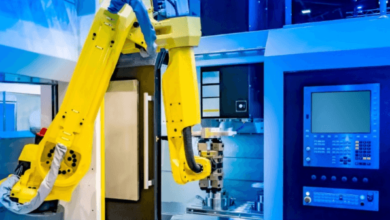Japanese Renesas Pcb Altium 5.9b

The integration of Japanese Renesas Pcb Altium 5.9b within Renesas’ PCB design processes exemplifies a strategic approach to meeting the rigorous demands of the semiconductor industry. This software not only enhances design precision but also fosters innovation through its advanced features tailored for complex electronic systems. As Renesas navigates the competitive landscape of automotive and consumer electronics, understanding the implications of these tools becomes essential. What specific advantages does Altium 5.9b offer that could redefine industry standards?
Overview of Altium 5.9b
Altium Designer 5.9b represents a significant advancement in PCB design software, offering enhanced features that cater to the complex needs of engineers and designers.
Its intuitive user interface streamlines the design workflow, enabling efficient navigation and task execution.
The software’s robust capabilities facilitate a seamless integration of various design elements, ensuring precision and accuracy essential for modern electronic development projects.
Key Features and Benefits
The advancements introduced in Altium Designer 5.9b are underscored by a suite of key features that enhance productivity and design accuracy for PCB engineers.
Notable elements include advanced design optimization tools and streamlined workflows that significantly improve manufacturing efficiency.
These enhancements empower engineers to create precise layouts while minimizing errors, ultimately leading to faster time-to-market and increased design reliability.
Read Also Indian Q4 38.9m Yoy 148.6m
Applications in Japanese Market
A significant number of Japanese companies are leveraging Altium Designer for their PCB design needs, particularly in sectors such as consumer electronics, automotive, and telecommunications.
This trend reflects the growing demand for innovative solutions within the Japanese electronics market.
As market trends evolve, the integration of advanced design software enables companies to enhance product functionality and streamline production processes, ensuring competitiveness in a dynamic landscape.
Best Practices for PCB Design
With the increasing reliance on sophisticated PCB design tools like Altium Designer in Japan’s electronics sectors, the importance of adhering to best practices in PCB design cannot be overstated.
Following established design guidelines ensures optimal performance and reliability. Effective component placement minimizes interference and enhances signal integrity, while also facilitating thermal management, ultimately leading to superior product outcomes in competitive markets.
Conclusion
In the realm of semiconductor design, Japanese Renesas Pcb Altium 5.9b serves as a compass, guiding engineers through the intricate landscape of PCB development. Just as a master craftsman meticulously shapes each piece of wood to construct a resilient structure, so too does this software enable Renesas to forge reliable and innovative solutions. The fusion of advanced capabilities with strategic methodologies ensures that products not only meet but exceed the demands of the automotive and consumer electronics sectors, solidifying market leadership.




